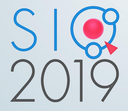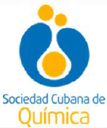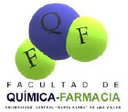Executive Secretary

7th International Chemistry Symposium
SIQ 2019
Heterocyclic scaffolds are present in numerous bioactive compounds and natural products that exhibit a wide variety of pharmacological activities, thus the development of new synthetics strategies to obtain heterocycles is still a very active research area. The present work describes some of the most recent methods that have been developed in our lab for the synthesis of this very important class of compounds. First, we present two different approaches for the synthesis of spiroindol(en)ines. One of the protocols consist in a N-iodosuccinimide-promoted spirocyclization of indol ynones while the other rely on the ability of triphenylphosphine to umpolung the reactivity of unsaturated amides. In both cases, final products do not undergo the expected 1,2-rearrengement and contain functional groups amenable for further modifications. The methods are fast, metal-free, atom-economical and proceed under mild reaction conditions. Finally, the synthesis of tetrazole-isoquinolones/pyridones hybrids is discussed. The method comprises a sequence based on the Ugi-azide reaction and a rhodium(III)-catalyzed intermolecular annulation, and relies on the ability of the metal catalyst to promote C(sp2)-H activation in presence of a directing group. The scope of the final products is very wide and includes benzo-fused derivatives. The developed procedure is simple, reproducible and does not require inert conditions.
Heterocyclic scaffolds are present in numerous bioactive compounds and natural products that exhibit a wide variety of pharmacological activities, thus the development of new synthetics strategies to obtain heterocycles is still a very active research area. The present work describes some of the most recent methods that have been developed in our lab for the synthesis of this very important class of compounds. First, we present two different approaches for the synthesis of spiroindol(en)ines. One of the protocols consist in a N-iodosuccinimide-promoted spirocyclization of indol ynones while the other rely on the ability of triphenylphosphine to umpolung the reactivity of unsaturated amides. In both cases, final products do not undergo the expected 1,2-rearrengement and contain functional groups amenable for further modifications. The methods are fast, metal-free, atom-economical and proceed under mild reaction conditions. Finally, the synthesis of tetrazole-isoquinolones/pyridones hybrids is discussed. The method comprises a sequence based on the Ugi-azide reaction and a rhodium(III)-catalyzed intermolecular annulation, and relies on the ability of the metal catalyst to promote C(sp2)-H activation in presence of a directing group. The scope of the final products is very wide and includes benzo-fused derivatives. The developed procedure is simple, reproducible and does not require inert conditions.
About The Speaker

Ph. D. Gerardo M. Ojeda-Carralero

Works as a lecturer at the University of Havana and is the Chair of the Scientific Committee of the National Chemistry Olympiad.





